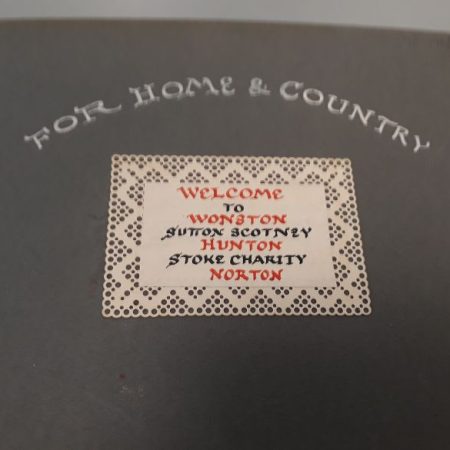The project catalogued the unlisted records of closed or superseded Hampshire Women’s Institutes (HRO collection reference 96M96). The records are contained in some 63 HRO standard boxes and 18 volume boxes. They were deposited in 14 separate accessions made between 2005 and 2019, but because of their bulk and increasingly limited HRO resources could not be catalogued at the time of receipt.
The records that catalogued by the project relate to 120 individual WIs and cover all areas of the county, rural and urban, from Blackwater and Fleet in the North East, Highclere in the North West, Southwick and Leigh Park in the South East, Beaulieu and New Milton in the South West as well as Winchester and many others in central Hampshire. They encompass 100 years of Hampshire’s history, dating from 1917 to 2016.
The records are catalogued on CALM 2000, the archival management software used at Hampshire Record Office and the catalogue will be made available on the web through the service’s Online Catalogue: http://calm.hants.gov.uk/advanced.aspx?src=CalmView.Catalog
The main body of records for each WI are the committee minute books and the record books of monthly meetings. These contain accounts of each meeting held, activities undertaken, speakers, crafts and plays and outings, and shine a light on the educative benefits of the WI in the early years. For example, the Highclere record book for 1918 states that Mrs Dalgety gave a talk on the ‘use of the vote’, which was described as ‘a very interesting talk on citizenship and women’s new responsibilities’. Looking at entries during significant times in national history illustrates how communities responded and, also, can show the involvement of landed families with the local WI. At the meeting at Highclere, on 5 September 1939, an ‘amusing entertainment was given by Lord Portchester, Lady Penelope Herbert and Miss Patricia Beauchamp including the Lambeth Walk songs, recitations and charades. This entry is also likely to be the only record of the future 7th Earl of Carnarvon’s activity during the first days of the 2nd World War.
As well as the committee and record books, the unlisted material includes examples of the wonderful scrapbooks WIs were encouraged to produce in the 1950s, detailing the history, natural history, local industry and buildings in their village or town. Often beautifully compiled, they offer a magnificent research tool for local and family historians. For example, in the unlisted Worting WI material is a scrapbook compiled in 1951, but with photographs dating back to 1911. It includes information and photographs on all aspects of village life, including the rifle club, church choir, cottages, cricket and football teams, Boys Brigade and Mums and babies at the Baby Show in 1950. Although these will be catalogued as part of the project, more detailed page by page cataloguing of individual scrapbook entries will be carried out by volunteers, so they would all be accessible and searchable on CALM. Guidance for volunteers on cataloguing the scrapbooks will therefore be produced as part of the project.
Also, in the Worting collection is a Jubilee Scrapbook, compiled in 1965, the year of the Golden Jubilee of the WI. This gives a wonderful ‘snapshot’ of the village as it was in 1965, with detailed information about all the facilities, clubs, industries, farms, shops, housing etc, and the number of residents, as well as an itemised list of a weekly shop in the village store, and example of wallpaper used in 1965. A similar volume in the uncatalogued collection exists in the records of Lyndhurst WI, and there may be more. These scrapbooks will prove very useful for social and local historians and again will benefit from page by page listing by volunteers.
Occasionally other types of records are included. For example, an important War Diary is among the unlisted records from Hurstbourne Priors, giving details of who was responsible for what volunteer posts, and also mentions the influx of new members, wives of officials from the Bank of England who were evacuated to Hurstbourne during the War, and details of the jam making which took place at the Jam Centre which opened in August 1940.
This projected completed March 2019

